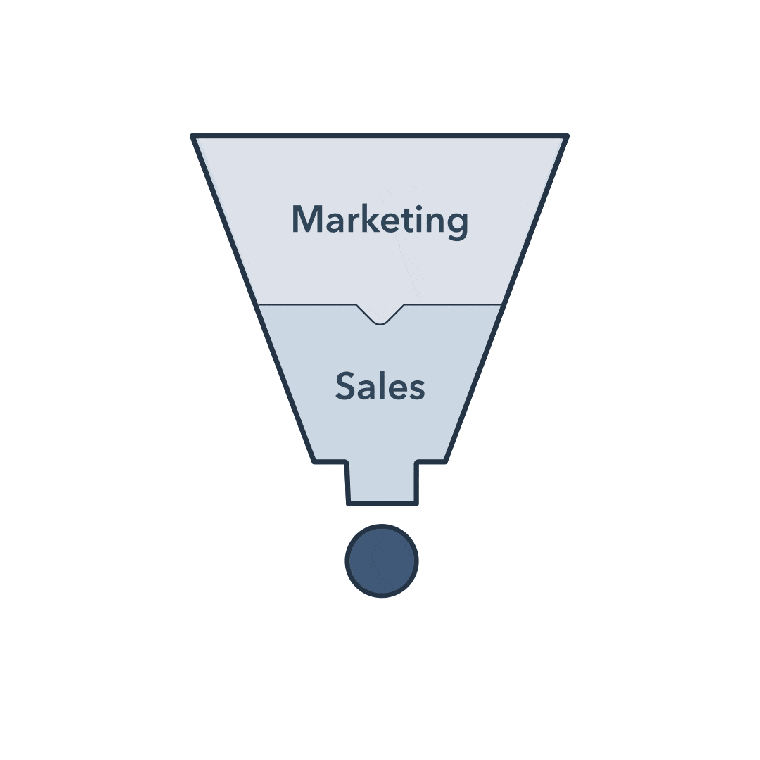Redefining the B2B Customer Journey With Payments
A high-powered customer relationship management (CRM) platform unites all customer data, communications, and interactions under one roof. The result? A productivity machine that can easily attract, engage, and delight prospects and existing customers across channels.
But what if you could supercharge your CRM with an easy-to-use payments solution that enabled you to sell online without making customers — or your sales reps — navigate external payment platforms?
We designed this guide to help growing B2B businesses create seamless, friction-free buying experiences through a centralized, commerce-powered CRM.
Inside, you’ll discover powerful tools and attainable strategies that, when used together, will streamline your B2B buyer’s journey and connect the dots from “hello” to “payment.”
The Rise of the CRM Platform
In today’s B2B market, CRM platforms are fundamental for businesses looking to support their customers, empower their employees, and drive long-term growth.
CRMs have completely transformed the way brands interact with, retain, and report on customers. How? The software enables seamless communication and makes customer data accessible and actionable across departments.
The right CRM platform unites every internal team behind a single source of truth, paving the way for a frictionless customer experience at every touchpoint.
From startups to global enterprises, B2B businesses of all sizes use CRM platforms to scale their operations and delight customers — and the craze isn’t going away anytime soon. The CRM market size was valued at $41.93 billion in 2019 and is projected to reach $96.39 billion by 2027. (Allied Market Research, 2021)
But as digital technologies and buyer expectations evolve in tandem, businesses must find new ways to attract customers and ignite growth by integrating innovative, customer-centric features into their CRMs.
The Emergence of the Commerce-Powered CRM
Always-on digital experiences have completely transformed the modern buyer’s journey. Thanks to the wealth of information online, today’s buyers can learn about, engage with, and test out products or services in a couple of clicks.
B2B businesses must learn to thrive in an ever-changing market where buyers don’t need to interact with salespeople to make a purchase. Instead, frictionless, self-service buying experiences are being sought after to put buyers in control without compromising quality or efficiency.
custom-module
Rich Text
A new generation of working professionals has also brought new expectations to the B2B buying process. As of 2021, a majority of B2B tech buyers (60%) are millennials who want touchless experiences and self-service options all the way through the sales funnel. (TrustRadius, 2021)
custom-module
Rich Text
Today’s CRMs, and the business leaders who manage them, must be equipped to deliver seamless buyers’ journeys, from first interaction to completed transaction. They also need to enable true B2B ecommerce — through touchless online sales that don’t require sales reps to serve as intermediaries.
Enter the Commerce-Powered CRM
A commerce-powered CRM, also known as an ecommerce CRM, includes all the tried-and-tested CRM capabilities growing businesses love, allowing them to:
- Record interactions, data, and notes about prospects or customers
- Align sales, marketing, customer service, accounting, and management
- Centralize operations through one scalable platform
Along with customer-centric features designed to simplify online sales and:
- Enable touchless selling for B2B and B2C
- Streamline rep-assisted sales with quote-to-cash lifecycles
- Deliver customer-centric experiences and digital services
- Unlock in-depth customer insights, including payment and transactional data
Why adopt a commerce-powered CRM? Bringing commerce data into your CRM gives your entire organization unrestricted access to commerce data that’s traditionally held in the back office.
With more customer data at their fingertips, your customer-facing teams can automate recurring processes, learn more about your B2B buyers, and develop hyper-personalized experiences across channels.
The Catch
Across industries, there’s a growing need for commerce-powered CRMs. However, many B2B small to medium-sized businesses (SMBs) haven’t caught up with the CRM curve.
SMBs that rely on a traditional CRM alone find themselves fighting to overcome wasted time, lost or delayed revenue, and missed sales opportunities.
Unfortunately, the outdated tools in an SMB’s arsenal don’t just throw a wrench in internal operations; they also make for a clunky, disjointed buyer’s journey. And just one unpleasant experience can have a lasting impact on customer retention and business reputation.
custom-module
Rich Text
The good news is, turning your CRM into a commerce-powered one doesn’t have to be expensive or labor-intensive.
By adopting easy-to-use solutions that seamlessly integrate with your existing CRM, you’ll empower your sales teams and pave the way for scalability by creating harmonious, customer-centric ecommerce experiences.
